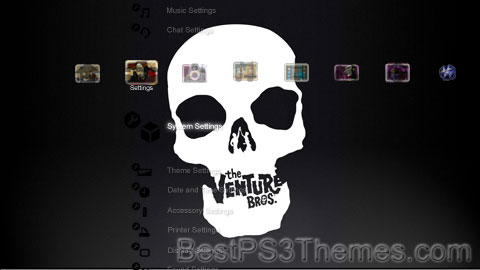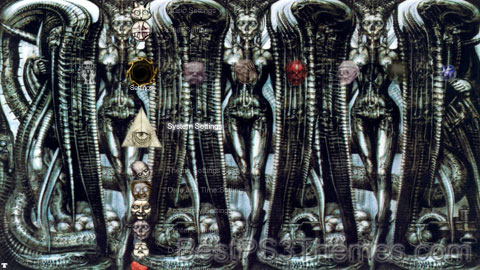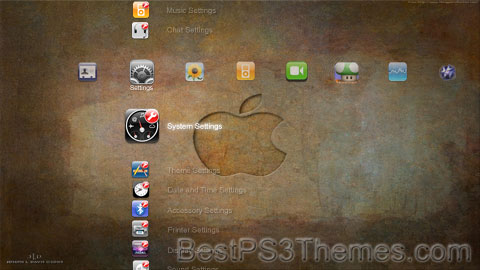Sydney FC theme by Stephenvz
Download: SydneyFC.p3t

(1 background)
 | ||||
| Full name | Sydney Football Club[1][2] | |||
|---|---|---|---|---|
| Nickname(s) | The Sky Blues | |||
| Founded | 1 November 2004 | |||
| Ground | Allianz Stadium | |||
| Capacity | 42,500 | |||
| Chairman | Scott Barlow | |||
| Manager | Ufuk Talay | |||
| League | A-League Men | |||
| 2023–24 | 4th of 12 | |||
| Website | Club website | |||
|
| ||||
Sydney Football Club is an Australian professional soccer club based in Sydney, New South Wales. It competes in the country's premier men's competition, A-League Men, under licence from Australian Professional Leagues (APL).[3] The club was founded in 2004 and entered the A-League as one of the eight original teams for the inaugural 2005–06 season.
Sydney FC is the most successful professional soccer club in Australia. The Sky Blues have won five A-League Men Championships, four A-League Men Premierships, two Australia Cup titles and one OFC Champions League title. The club has also appeared in the AFC Champions League on seven occasions, making the Round of 16 in 2016. The club experienced its most successful period from 2016 to 2020, when Graham Arnold and Steve Corica led the club to a combined three Championships and three Premierships, as well as an Australia Cup.
Before the 2018–19 season, the club's home ground was Allianz Stadium in Moore Park. When the NSW Government announced that the stadium would be redeveloped in the lead up to the 2019 New South Wales state election, Sydney FC played its home matches at the neighbouring Sydney Cricket Ground, along with the suburban Jubilee Oval and Leichhardt Oval grounds. In October 2022, the club returned to the newly built Allianz Stadium in Moore Park.[4] The clubs training and administration facility in North Ryde, known as Sky Park, was completed in 2023.[5][6]
As the only A-League team in the city for the first seven years of its existence, the club's fans hail from all across the Sydney Metropolitan Area.[7] Sydney's main supporter group is known as 'The Cove', named after the original title given to the colonial settlement of Sydney, Sydney Cove. The club has rivalries with Melbourne Victory, known as The Big Blue, and the Western Sydney Wanderers, named the Sydney Derby. Alex Brosque is the club's all time top goal scorer, having scored 83 goals. Rhyan Grant has the most appearances for the club, having played 339 games.
History[edit]
2004–2009: early years[edit]

The first steps towards the foundation of Sydney FC were taken in April 2004 when Soccer New South Wales (now Football NSW) announced its intention to bid for a licence in the new A-League competition.[8] The bid was lodged with the Australian Soccer Association (now Football Australia) on 19 July, challenged only by a consortium headed by Nick Politis, known as the "Sydney Blues",[9] for Sydney's place in the 'one team per city' competition.[10] A public row broke out between the two bidders after reports that the ASA were set to vote in favour of Sydney FC,[11] causing Politis to withdraw his support for a team,[12] and leaving Sydney FC as the only candidate remaining.
Sydney FC was officially launched as a member of the new 8-team A-League on 1 November 2004, with a 25% stake in the club held by Soccer NSW, the remainder privately owned.[13] Walter Bugno was announced as the inaugural chairman of the club. On 11 December 2004, Soccer NSW announced that it would pull out of its involvement with Sydney FC amid concerns over part owner Frank Lowy's autocratic style in establishing the club and lack of consultation with Soccer NSW on key Sydney FC issues. These included the choice of the Sydney Football Stadium over Parramatta Stadium as the team's home ground, and the erosion of Soccer NSW's initial 100 per cent involvement to just 25 per cent.[14]
By February 2005, Sydney FC had filled 16 of its allowed 20 squad positions—attracting Socceroos Alvin Ceccoli, Clint Bolton, Steve Corica and David Zdrilic as well as youth internationals Justin Pasfield, Mark Milligan, Wade Oostendorp, Iain Fyfe and Jacob Timpano.[15] German Pierre Littbarski was signed as head coach, assisted by former Norwich City player Ian Crook. Sydney FC played its first ever match against Manly United on 25 March 2005, winning 6–1.[16] Shortly after, Sydney FC set off on a tour to the United Arab Emirates to play against local teams FC Hatta, Al Ain and Al Jazira, winning all three.[17][18][19] While in Dubai, Sydney FC announced that it had agreed to terms with former Manchester United player Dwight Yorke as the club's "marquee player"– one paid outside of the $1.5million salary cap— for two seasons.[20]
Sydney FC's first competitive match was against Queensland Roar at Central Coast Stadium in Gosford as part of the 2005 Australian Club World Championship Qualifying Tournament. After winning 3–0, Sydney went on to defeat Perth Glory and Central Coast Mariners to qualify for the 2005 Oceania Club Championship, held in Tahiti. Despite an early scare against New Zealand club Auckland City,[21] Sydney FC won all of its matches and qualified for the 2005 FIFA Club World Championship in Japan. The start of the 2005 A-League Pre-Season Challenge Cup marked Sydney FC's first match at Allianz Stadium, as well as Dwight Yorke's first appearance for the club. Yorke scored the first goal of Sydney FC's 3–1 win which stretched its unbeaten run to 9 competitive matches (15 including friendlies). Upon reaching the semi-finals, Sydney's unbeaten run finally ended at 11 with Perth Glory midfielder Nick Ward scoring in injury time to inflict the new club's first ever loss.[22]

Sydney FC's first season was ultimately a success. Finishing second behind Adelaide United they went on to defeat Central Coast Mariners 1–0 in the 2006 A-League Grand Final with Steve Corica scoring in the second half of the game. However, the club's success wouldn't last long, with German manager Pierre Littbarski leaving the club after refusing to accept a lower salary[23] and inaugural marquee player Dwight Yorke being signed by Premier League club Sunderland.[24] Former English international Terry Butcher was signed as Sydney FC's new coach for 2006–07.[25] However it was regarded as an overall failure, with Sydney playing poorly despite the signing of Alex Brosque and Benito Carbone as a Guest player. Sydney also had 3 points deducted during the season, after it was found that they had breached the Salary cap, involving player David Zdrillic.[26] Despite the off field problems, Sydney managed to scrape into the finals series, however they lost in the semi-final to Newcastle Jets. Although Butcher led the club into the finals, Sydney fans were unhappy with his tactics. In the end Butcher and Sydney FC went their separate ways at the end of the season.[27] Sydney FC would go on to sign Branko Čulina for its 2007 AFC Champions League campaign, where they finished second in the group, one point behind ultimate champions and J-League heavyweights Urawa Red Diamonds. Despite the ACL success, Sydney FC's start to the 2007–08 season was poor, and the club sacked him, replacing him with former Adelaide United manager John Kosmina.[28] Sydney FC played well for the rest of the season but were knocked out in the finals by Brisbane Roar. Kosmina couldn't repeat the success of the previous season, replacing Brazilian international Juninho with Socceroos hero John Aloisi on a million dollar contract.[29] The club also unveiled Newcastle Jets championship winners Mark Bridge and Stuart Musialik as well as Socceroo Simon Colosimo for the 2008–09 season.[29][30] The season did not live up to expectations even with these key signings. Aloisi didn't perform very well during the season and came under heavy fire. So too did manager Kosmina, whose tactics were seen as controversial. His relationship with the media often became angry and frustrated which didn't help causes. Many players fell out of favour with the coach, including Steve Corica and Clint Bolton.[31] For the first time in the club's history, they failed to make the Finals. As a result Kosmina was fired when Russian billionaire David Traktovenko became owner in March 2009.
2009–2012: Lavicka tenure[edit]
The fresh change at the club was about to bear fruit, when Sydney announced they had signed Czech Republic manager Vítězslav Lavička.[32] Lavicka completely changed the structure of the club, and for its first time turning it into a serious, European style soccer club. He kept faith in Steve Corica and John Aloisi and several others who had threatened to walk out, and as a result, Sydney FC won its first premiership. Sydney made it to the Grand Final of the fifth season of the A-League after defeating Wellington Phoenix in the preliminary final. The Grand Final was played against Melbourne Victory at Etihad Stadium in Melbourne. Sydney took the lead after 61 minutes through a Mark Bridge header, just seconds after Melbourne had a goal disallowed for offside. Melbourne equalised through Adrian Leijer in the 81st minute, and the game went to a penalty shootout with no goals scored in extra time. Melbourne skipper Kevin Muscat missed his penalty, with his shot hitting the post. Sydney FC won the Grand Final 4–2 on penalties which handed the club its second Hyundai A-League Championship.

Sydney FC's title defence did not go smoothly. The club lost key players from its championship-winning side including Steve Corica (retired),[33] Karol Kisel (return to Europe),[34] Simon Colosimo,[35] John Aloisi,[36] and Clint Bolton[37] (all Melbourne Heart). The club however picked up the services of former Socceroo Nick Carle from his stint in England with Crystal Palace. This wasn't enough to steer the team in the right direction. The club was winless for the first ten rounds of the competition. Sydney FC managed to pick up a few points over the next few rounds but another five-game losing streak ensured they would not qualify for the finals competition, finishing ninth. The third season under Lavicka began with the major signing of Blackburn Rovers player Brett Emerton on a three-year deal.[38] The signing was significant in that Emerton became the first player to directly exchange the FA Premier League for the A-League by terminating his Rovers contract one year early.[39] The season however, only provided minimal success as the club scraped through to the finals series with a 3–2 win over Newcastle Jets in the final round of the regular season. Before the end of the season the club announced that head coach Lavicka's contract would not be renewed for the following season.[40][41]
2012–2014: Farina reign[edit]

"This is huge for Sydney FC, huge for the A-League and huge for Australian football [sic]. We feel honoured that Alessandro has decided to play for Sydney FC and we share his excitement that a move to Sydney FC will create a lasting legacy for football in this country."
—Sydney FC chairman Scott Barlow, The Sydney Morning Herald
The 2012–13 season was one of high drama. There was a new head coach Ian Crook[42] and a high turnover of players in the off season. The expectations changed from a year of rebuilding to title contenders when the club acquired the services of international superstar Alessandro Del Piero.[43][44] He signed on for $2 million per year and became the highest-paid player ever in the A-League.[45]
After only six weeks into the regular season Sydney were forced to find a new coach with the shock resignation of Crook. He cited the role was "a constant burden" and was adversely affecting his health.[46][47] Frank Farina was confirmed as Crook's successor for the season two games into Steve Corica's interim spell.[48] During the January transfer window, Farina bolstered his defensive stocks with Socceroos captain Lucas Neill[49][50] and Brazilian Tiago Calvano[51] joining the team. The pair made nil significant impact and with a 3–1 loss away from home to Brisbane Roar, Sydney were unable to pick up a vital point that would have seen them play in the finals, finishing seventh.
For the 2013–14 pre season, the club became the first club in A-League history to tour in Europe, as Sydney toured in Venice, Italy, where the club played against Del Piero's first professional club, Padova, Udinese Calcio, Vicenza Calcio, A.S. Cittadella, Venezia and Reggiana.[52][53] Sydney won half of these six games however upon returning home lost five consecutive friendly games in the lead up to the season proper. Two-thirds of the way into the season and with Sydney FC only accumulating 4 points from 8 games, fans began to express concerns over the vision for the club. Banners at the club's home game against Adelaide included sentiments like "We want Farina gone."[54] There was also a mass exodus from the club's active supporter group, The Cove.[55] The club then held a fan forum to receive questions and communicate the direction of the club.[56] During the last nine rounds, Sydney FC only lost two games making the finals. The club lost to Melbourne Victory in the first week of the finals. This marked the end of the Frank Farina reign.[57][58]
2014–2018: Arnold era[edit]
Chica
Chica theme by Kenzie C.
Download: Chica.p3t

(1 background)
Chica may refer to:
- Chica (name), a given name, surname and nickname
Other uses[edit]
- Chica (dye), an orange-red dye
- Chicá, Panama, a subdistrict
- Fridericia chica, also called chica, a plant
- the title character of The Chica Show, an American animated television series
- Chica, an animatronic character from Five Nights at Freddy's
See also[edit]
- All pages with titles beginning with Chica
- All pages with titles containing Chica
- Boca Chica (disambiguation)
- Chika (disambiguation)
- Nhá Chica, "Aunt Francie" in Portuguese, nickname of Francisca de Paula de Jesus (1810–1895), first Afro-Brazilian Roman Catholic to be beatified
- Olga de Chica (1921–2016), Colombian neo-primitivist painter
- Checa (disambiguation)
- Chia (disambiguation)
- Chiba (disambiguation)
- Chic (disambiguation)
- Chick (disambiguation)
- Chico (disambiguation)
- Chilca (disambiguation)
- China (disambiguation)
- Chita (disambiguation)
The Venture Brothers
The Venture Brothers theme by TehBoltzorz
Download: TheVentureBrothers.p3t

(1 background)
Redirect to:
Hommage Du Giger
Hommage Du Giger theme by Chuddeluxe
Download: HommageDuGiger.p3t

(10 backgrounds)
P3T Unpacker v0.12
Copyright (c) 2007. Anoop Menon
This program unpacks Playstation 3 Theme files (.p3t) so that you can touch-up an existing theme to your likings or use a certain wallpaper from it (as many themes have multiple). But remember, if you use content from another theme and release it, be sure to give credit!
Download for Windows: p3textractor.zip
Instructions:
Download p3textractor.zip from above. Extract the files to a folder with a program such as WinZip or WinRAR. Now there are multiple ways to extract the theme.
The first way is to simply open the p3t file with p3textractor.exe. If you don’t know how to do this, right click the p3t file and select Open With. Alternatively, open the p3t file and it will ask you to select a program to open with. Click Browse and find p3textractor.exe from where you previously extracted it to. It will open CMD and extract the theme to extracted.[filename]. After that, all you need to do for any future p3t files is open them and it will extract.
The second way is very simple. Just drag the p3t file to p3textractor.exe. It will open CMD and extract the theme to extracted.[filename].
For the third way, first put the p3t file you want to extract into the same folder as p3textractor.exe. Open CMD and browse to the folder with p3extractor.exe. Enter the following:
p3textractor filename.p3t [destination path]Replace filename with the name of the p3t file, and replace [destination path] with the name of the folder you want the files to be extracted to. A destination path is not required. By default it will extract to extracted.filename.
ACE Clan
ACE Clan theme by Andy-McNeill
Download: ACEClan.p3t

(1 background)
P3T Unpacker v0.12
Copyright (c) 2007. Anoop Menon
This program unpacks Playstation 3 Theme files (.p3t) so that you can touch-up an existing theme to your likings or use a certain wallpaper from it (as many themes have multiple). But remember, if you use content from another theme and release it, be sure to give credit!
Download for Windows: p3textractor.zip
Instructions:
Download p3textractor.zip from above. Extract the files to a folder with a program such as WinZip or WinRAR. Now there are multiple ways to extract the theme.
The first way is to simply open the p3t file with p3textractor.exe. If you don’t know how to do this, right click the p3t file and select Open With. Alternatively, open the p3t file and it will ask you to select a program to open with. Click Browse and find p3textractor.exe from where you previously extracted it to. It will open CMD and extract the theme to extracted.[filename]. After that, all you need to do for any future p3t files is open them and it will extract.
The second way is very simple. Just drag the p3t file to p3textractor.exe. It will open CMD and extract the theme to extracted.[filename].
For the third way, first put the p3t file you want to extract into the same folder as p3textractor.exe. Open CMD and browse to the folder with p3extractor.exe. Enter the following:
p3textractor filename.p3t [destination path]Replace filename with the name of the p3t file, and replace [destination path] with the name of the folder you want the files to be extracted to. A destination path is not required. By default it will extract to extracted.filename.
Apple #3
Apple theme by The Boss (C.)
Download: Apple_3.p3t

(1 background)
| Apple | |
|---|---|

| |
| 'Cripps Pink' apples | |

| |
| Flowers | |
| Scientific classification | |
| Kingdom: | Plantae |
| Clade: | Tracheophytes |
| Clade: | Angiosperms |
| Clade: | Eudicots |
| Clade: | Rosids |
| Order: | Rosales |
| Family: | Rosaceae |
| Genus: | Malus |
| Species: | M. domestica
|
| Binomial name | |
| Malus domestica Borkh., 1803
| |
| Synonyms[1][2] | |
| |
An apple is a round, edible fruit produced by an apple tree (Malus spp., among them the domestic or orchard apple; Malus domestica). Apple trees are cultivated worldwide and are the most widely grown species in the genus Malus. The tree originated in Central Asia, where its wild ancestor, Malus sieversii, is still found. Apples have been grown for thousands of years in Eurasia and were introduced to North America by European colonists. Apples have religious and mythological significance in many cultures, including Norse, Greek, and European Christian tradition.
Apples grown from seed tend to be very different from those of their parents, and the resultant fruit frequently lacks desired characteristics. For commercial purposes, including botanical evaluation, apple cultivars are propagated by clonal grafting onto rootstocks. Apple trees grown without rootstocks tend to be larger and much slower to fruit after planting. Rootstocks are used to control the speed of growth and the size of the resulting tree, allowing for easier harvesting.
There are more than 7,500 cultivars of apples.[3] Different cultivars are bred for various tastes and uses, including cooking, eating raw, and cider or apple juice production. Trees and fruit are prone to fungal, bacterial, and pest problems, which can be controlled by a number of organic and non-organic means. In 2010, the fruit's genome was sequenced as part of research on disease control and selective breeding in apple production.
From 2014 to 2023, there have been an average of 78 million tonnes of apples globally produced per year. In 2023, the worldwide production of apples was 83 million tonnes, with China accounting for nearly half of the total.[4]
Etymology[edit]
The word apple, whose Old English ancestor is æppel, is descended from the Proto-Germanic noun *aplaz, descended in turn from Proto-Indo-European *h₂ébōl.[5]
As late as the 17th century, the word also functioned as a generic term for all fruit, including nuts. This can be compared to the 14th-century Middle English expression appel of paradis, meaning a banana.[6]
Description[edit]
The apple is a deciduous tree, generally standing 2 to 4.5 metres (6 to 15 feet) tall in cultivation and up to 9 m (30 ft) in the wild. When cultivated, the size, shape and branch density are determined by rootstock selection and trimming method. The leaves are alternately arranged dark green-colored simple ovals with serrated margins and slightly downy undersides.[7]
Blossoms are produced in spring simultaneously with the budding of the leaves and are produced on spurs and some long shoots. The 3-to-4-centimeter (1-to-1+1⁄2-inch) flowers are white with a pink tinge that gradually fades, five petaled, with an inflorescence consisting of a cyme with 4–6 flowers. The central flower of the inflorescence is called the "king bloom"; it opens first and can develop a larger fruit.[7][8]
The fruit is a pome that matures in late summer or autumn, and cultivars exist in a wide range of sizes. Commercial growers aim to produce an apple that is 7 to 8.5 cm (2+3⁄4 to 3+1⁄4 in) in diameter, due to market preference. Some consumers, especially in Japan, prefer a larger apple, while apples less than 5.5 cm (2+1⁄4 in) are generally used for juicing and have little fresh market value.
-
Apple blossoms
-
Botanical illustration
-
Apple morphology
Skin[edit]


The groundcolor of ripe apples is yellow, green, yellow-green or whitish yellow. The overcolor of ripe apples can be orange-red, pink-red, red, purple-red or brown-red. The overcolor amount can be 0–100%.[9] The skin may also be wholly or partly russeted (i.e. rough and brown). The skin is covered in a protective layer of epicuticular wax.[10] The exocarp (flesh) is generally pale yellowish-white,[9] though pink, yellow or green exocarps also occur.
Chemistry[edit]
Important volatile compounds in apples include acetaldehyde, ethyl acetate, 1-butanal, ethanol, 2-methylbutanal, 3-methylbutanal, ethyl propionate, ethyl 2-methylpropionate, ethyl butyrate, ethyl 2-methyl butyrate, hexanal, 1-butanol, 3-methylbutyl acetate, 2-methylbutyl acetate, 1-propyl butyrate, ethyl pentanoate, amyl acetate, 2-methyl-1-butanol, trans-2-hexenal, ethyl hexanoate, hexanol.[11][12]
Taxonomy[edit]
The apple as a species has been given a number of alternative scientific names, or synonyms. In modern times, Malus pumila and Malus domestica are the two main names in use. M. pumila is the older name, but M. domestica has become much more commonly used starting in the 21st century, especially in the western world. Two proposals were made to make M. domestica a conserved name: the earlier proposal was voted down by the Committee for Vascular Plants of the IAPT in 2014, but in April 2017 the Committee decided, with a narrow majority, that the newly popular name should be conserved.[13] The General Committee of the IAPT decided in June 2017 to approve this change, officially conserving M. domestica.[2]
Nevertheless, a number of publications published after 2017 still use M. domestica as the correct name, under an alternate taxonomy.[14]
Wild ancestors[edit]
The original wild ancestor of Malus domestica was Malus sieversii, found growing wild in the mountains of Central Asia in southern Kazakhstan, Kyrgyzstan, Tajikistan, and northwestern China.[7][15] Cultivation of the species, most likely beginning on the forested flanks of the Tian Shan mountains, progressed over a long period of time and permitted secondary introgression of genes from other species into the open-pollinated seeds. Significant exchange with Malus sylvestris, the crabapple, resulted in populations of apples being more related to crabapples than to the more morphologically similar progenitor Malus sieversii. In strains without recent admixture the contribution of the latter predominates.[16][17][18]
Genome[edit]
Apples are diploid (though triploid cultivars are not uncommon), have 17 chromosomes and an estimated genome size of approximately 650 Mb. Several whole genome sequences have been completed and made available. The first one in 2010 was based on the diploid cultivar 'Golden Delicious'.[19] However, this first whole genome sequence turned out to contain several errors[20] in part owing to the high degree of heterozygosity in diploid apples which, in combination with an ancient genome duplication, complicated the assembly. Recently, double- and trihaploid individuals have been sequenced, yielding whole genome sequences of higher quality.[21][22]
The first whole genome assembly was estimated to contain around 57,000 genes,[19] though the more recent genome sequences support estimates between 42,000 and 44,700 protein-coding genes.[21][22] The availability of whole genome sequences has provided evidence that the wild ancestor of the cultivated apple most likely is Malus sieversii. Re-sequencing of multiple accessions has supported this, while also suggesting extensive introgression from Malus sylvestris following domestication.[23]
Distribution and habitat[edit]
Central Asia is generally considered the center of origin for apples due to the genetic variability in specimens there.[24]
Cultivation[edit]

History[edit]
The apple is thought to have been domesticated 4,000–10,000 years ago in the Tian Shan mountains, and then to have travelled along the Silk Road to Europe, with hybridization and introgression of wild crabapples from Siberia (M. baccata), the Caucasus (M. orientalis), and Europe (M. sylvestris). Only the M. sieversii trees growing on the western side of the Tian Shan mountains contributed genetically to the domesticated apple, not the isolated population on the eastern side.[23]
Chinese soft apples, such as M. asiatica and M. prunifolia, have been cultivated as dessert apples for more than 2,000 years in China. These are thought to be hybrids between M. baccata and M. sieversii in Kazakhstan.[23]
Among the traits selected for by human growers are size, fruit acidity, color, firmness, and soluble sugar. Unusually for domesticated fruits, the wild M. sieversii origin is only slightly smaller than the modern domesticated apple.[23]
At the Sammardenchia-Cueis site near Udine in Northeastern Italy, seeds from some form of apples have been found in material carbon dated to around 4000 BCE.[25] Genetic analysis has not yet been successfully used to determine whether such ancient apples were wild Malus sylvestris or Malus domesticus containing Malus sieversii ancestry.[26] It is generally also hard to distinguish in the archeological record between foraged wild apples and apple plantations.
There is indirect evidence of apple cultivation in the third millennium BCE in the Middle East. There was substantial apple production in the European classical antiquity, and grafting was certainly known then.[26] Grafting is an essential part of modern domesticated apple production, to be able to propagate the best cultivars; it is unclear when apple tree grafting was invented.[26]
Winter apples, picked in late autumn and stored just above freezing, have been an important food in Asia and Europe for millennia.[27] Of the many Old World plants that the Spanish introduced to Chiloé Archipelago in the 16th century, apple trees became particularly well adapted.[28] Apples were introduced to North America by colonists in the 17th century,[7] and the first apple orchard on the North American continent was planted in Boston by Reverend William Blaxton in 1625.[29] The only apples native to North America are crab apples, which were once called "common apples".[30]
Apple cultivars brought as seed from Europe were spread along Native American trade routes, as well as being cultivated on colonial farms. An 1845 United States apples nursery catalogue sold 350 of the "best" cultivars, showing the proliferation of new North American cultivars by the early 19th century.[30] In the 20th century, irrigation projects in Eastern Washington began and allowed the development of the multibillion-dollar fruit industry, of which the apple is the leading product.[7]
Until the 20th century, farmers stored apples in frostproof cellars during the winter for their own use or for sale. Improved transportation of fresh apples by train and road replaced the necessity for storage.[31][32] Controlled atmosphere facilities are used to keep apples fresh year-round. Controlled atmosphere facilities use high humidity, low oxygen, and controlled carbon dioxide levels to maintain fruit freshness. They were first used in the United States in the 1960s.[33]
Breeding[edit]

Many apples grow readily from seeds. However, more than with most perennial fruits, apples must be propagated asexually to obtain the sweetness and other desirable characteristics of the parent. This is because seedling apples are an example of "extreme heterozygotes", in that rather than inheriting genes from their parents to create a new apple with parental characteristics, they are instead significantly different from their parents, perhaps to compete with the many pests.[34] Triploid cultivars have an additional reproductive barrier in that three sets of chromosomes cannot be divided evenly during meiosis, yielding unequal segregation of the chromosomes (aneuploids). Even in the case when a triploid plant can produce a seed (apples are an example), it occurs infrequently, and seedlings rarely survive.[35]
Because apples are not true breeders when planted as seeds, although cuttings can take root and breed true, and may live for a century, grafting is usually used. The rootstock used for the bottom of the graft can be selected to produce trees of a large variety of sizes, as well as changing the winter hardiness, insect and disease resistance, and soil preference of the resulting tree. Dwarf rootstocks can be used to produce very small trees (less than 3.0 m or 10 ft high at maturity), which bear fruit many years earlier in their life cycle than full size trees, and are easier to harvest.[36]
Dwarf rootstocks for apple trees can be traced as far back as 300 BCE, to the area of Persia and Asia Minor. Alexander the Great sent samples of dwarf apple trees to Aristotle's Lyceum. Dwarf rootstocks became common by the 15th century and later went through several cycles of popularity and decline throughout the world.[37] The majority of the rootstocks used to control size in apples were developed in England in the early 1900s. The East Malling Research Station conducted extensive research into rootstocks, and their rootstocks are given an "M" prefix to designate their origin. Rootstocks marked with an "MM" prefix are Malling-series cultivars later crossed with trees of 'Northern Spy' in Merton, England.[38]
Most new apple cultivars originate as seedlings, which either arise by chance or are bred by deliberately crossing cultivars with promising characteristics.[39] The words "seedling", "pippin", and "kernel" in the name of an apple cultivar suggest that it originated as a seedling. Apples can also form bud sports (mutations on a single branch). Some bud sports turn out to be improved strains of the parent cultivar. Some differ sufficiently from the parent tree to be considered new cultivars.[40]
Since the 1930s, the Excelsior Experiment Station at the University of Minnesota has introduced a steady progression of important apples that are widely grown, both commercially and by local orchardists, throughout Minnesota and Wisconsin. Its most important contributions have included 'Haralson' (which is the most widely cultivated apple in Minnesota), 'Wealthy', 'Honeygold', and 'Honeycrisp'.
Apples have been acclimatized in Ecuador at very high altitudes, where they can often, with the needed factors, provide crops twice per year because of constant temperate conditions year-round.[41]
Pollination[edit]


Apples are self-incompatible; they must cross-pollinate to develop fruit. During the flowering each season, apple growers often utilize pollinators to carry pollen. Honey bees are most commonly used. Orchard mason bees are also used as supplemental pollinators in commercial orchards. Bumblebee queens are sometimes present in orchards, but not usually in sufficient number to be significant pollinators.[40][42]
Cultivars are sometimes classified by the day of peak bloom in the average 30-day blossom period, with pollinizers selected from cultivars within a 6-day overlap period. There are four to seven pollination groups in apples, depending on climate:
- Group A – Early flowering, 1 to 3 May in England ('Gravenstein', 'Red Astrachan')
- Group B – 4 to 7 May ('Idared', 'McIntosh')
- Group C – Mid-season flowering, 8 to 11 May ('Granny Smith', 'Cox's Orange Pippin')
- Group D – Mid/late season flowering, 12 to 15 May ('Golden Delicious', 'Calville blanc d'hiver')
- Group E – Late flowering, 16 to 18 May ('Braeburn', 'Reinette d'Orléans')
- Group F – 19 to 23 May ('Suntan')
- Group H – 24 to 28 May ('Court-Pendu Gris' – also called Court-Pendu plat)
One cultivar can be pollinated by a compatible cultivar from the same group or close (A with A, or A with B, but not A with C or D).[43]
Maturation and harvest[edit]

Cultivars vary in their yield and the ultimate size of the tree, even when grown on the same rootstock. Some cultivars, if left unpruned, grow very large—letting them bear more fruit, but making harvesting more difficult. Depending on tree density (number of trees planted per unit surface area), mature trees typically bear 40–200 kg (90–440 lb) of apples each year, though productivity can be close to zero in poor years. Apples are harvested using three-point ladders that are designed to fit amongst the branches. Trees grafted on dwarfing rootstocks bear about 10–80 kg (20–180 lb) of fruit per year.[40]
Some farms with apple orchards open them to the public so consumers can pick their own apples.[44]
Crops ripen at different times of the year according to the cultivar. Cultivar that yield their crop in the summer include 'Gala', 'Golden Supreme', 'McIntosh', 'Transparent', 'Primate', 'Sweet Bough', and 'Duchess'; fall producers include 'Fuji', 'Jonagold', 'Golden Delicious', 'Red Delicious', 'Chenango', 'Gravenstein', 'Wealthy', 'McIntosh', 'Snow', and 'Blenheim'; winter producers include 'Winesap', 'Granny Smith', 'King', 'Wagener', 'Swayzie', 'Greening', and 'Tolman Sweet'.[30]
Storage[edit]

Devil May Cry V2 #2
Devil May Cry version 2 theme by NoJ
Download: DevilMayCryV2_2.p3t

(10 backgrounds)
P3T Unpacker v0.12
Copyright (c) 2007. Anoop Menon
This program unpacks Playstation 3 Theme files (.p3t) so that you can touch-up an existing theme to your likings or use a certain wallpaper from it (as many themes have multiple). But remember, if you use content from another theme and release it, be sure to give credit!
Download for Windows: p3textractor.zip
Instructions:
Download p3textractor.zip from above. Extract the files to a folder with a program such as WinZip or WinRAR. Now there are multiple ways to extract the theme.
The first way is to simply open the p3t file with p3textractor.exe. If you don’t know how to do this, right click the p3t file and select Open With. Alternatively, open the p3t file and it will ask you to select a program to open with. Click Browse and find p3textractor.exe from where you previously extracted it to. It will open CMD and extract the theme to extracted.[filename]. After that, all you need to do for any future p3t files is open them and it will extract.
The second way is very simple. Just drag the p3t file to p3textractor.exe. It will open CMD and extract the theme to extracted.[filename].
For the third way, first put the p3t file you want to extract into the same folder as p3textractor.exe. Open CMD and browse to the folder with p3extractor.exe. Enter the following:
p3textractor filename.p3t [destination path]Replace filename with the name of the p3t file, and replace [destination path] with the name of the folder you want the files to be extracted to. A destination path is not required. By default it will extract to extracted.filename.
SinS
SinS theme by LoVeRSaMa
Download: SinS.p3t

(1 background)
P3T Unpacker v0.12
Copyright (c) 2007. Anoop Menon
This program unpacks Playstation 3 Theme files (.p3t) so that you can touch-up an existing theme to your likings or use a certain wallpaper from it (as many themes have multiple). But remember, if you use content from another theme and release it, be sure to give credit!
Download for Windows: p3textractor.zip
Instructions:
Download p3textractor.zip from above. Extract the files to a folder with a program such as WinZip or WinRAR. Now there are multiple ways to extract the theme.
The first way is to simply open the p3t file with p3textractor.exe. If you don’t know how to do this, right click the p3t file and select Open With. Alternatively, open the p3t file and it will ask you to select a program to open with. Click Browse and find p3textractor.exe from where you previously extracted it to. It will open CMD and extract the theme to extracted.[filename]. After that, all you need to do for any future p3t files is open them and it will extract.
The second way is very simple. Just drag the p3t file to p3textractor.exe. It will open CMD and extract the theme to extracted.[filename].
For the third way, first put the p3t file you want to extract into the same folder as p3textractor.exe. Open CMD and browse to the folder with p3extractor.exe. Enter the following:
p3textractor filename.p3t [destination path]Replace filename with the name of the p3t file, and replace [destination path] with the name of the folder you want the files to be extracted to. A destination path is not required. By default it will extract to extracted.filename.
Red X
Red X theme by J.Slomo
Download: RedX.p3t

(7 backgrounds)
Redirect to:
- With possibilities: This is a redirect from a title that potentially could be expanded into a new article or other type of associated page such as a new template. The topic described by this title may be more detailed than is currently provided on the target page or in a section of that page.
- When the target page becomes too large, or for any reason a new page would be an improvement, this redirect may be replaced with an article, template or other project page that is carved out of the target page. See also {{R to section}} and use together with this rcat when appropriate.
- If the topic of the redirect is not susceptible to expansion, then use other rcats such as {{R to section}} or {{R to list entry}} when appropriate.
- Since a new page may be created, links to this redirect should not be replaced with a direct link to the target page. To make redirects to this page, use {{R avoided double redirect}}.
- {{R printworthy}} should be used together with this template when applied to a redirect in mainspace.
- When used on a template redirect, it will automatically populate Category:Template redirects with possibilities.






